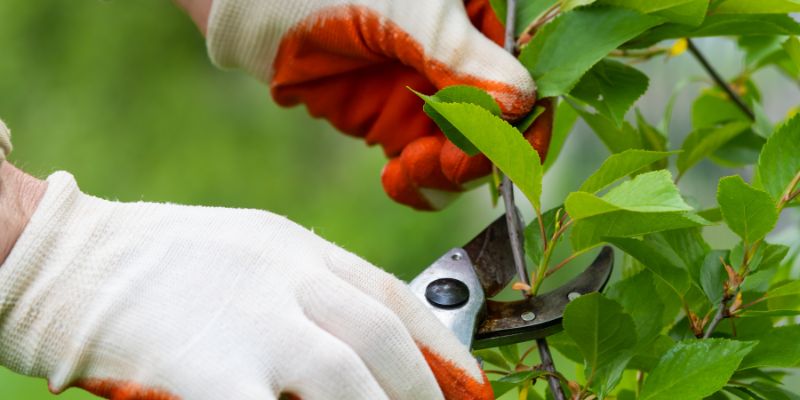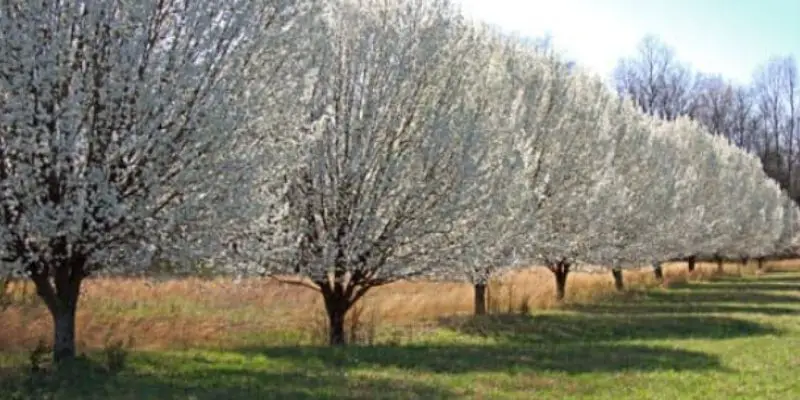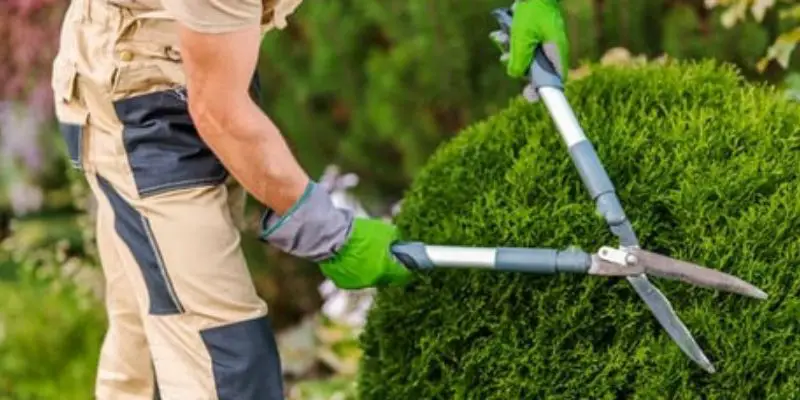One essential part of keeping your plants healthy and attractive is cutting their leaves properly. The difference between those who know how to trim plant leaves when dealing with thriving indoor plants, vibrant garden shrubs, or bountiful fruit trees can be a very big one.
In this detailed guide, I will discuss the art and science of leaf trimming as much as possible so that you are well-armed with the necessary knowledge and confidence to keep your plants at their best. This will mean going through things like the structure of leaf anatomy to achieving mastery in pruning techniques; everything you need to become an expert in leaf trimming.
Understanding Plant Leaf Anatomy and Structure
Before going into details about how to trim plant leaves, it is important that we first have a good understanding of plant leaf anatomy and structure. That way, you will easily identify which areas need attention while ensuring they are snipped away in such a manner that enhances plant’s wellness.
A plant leaf has three major parts:
- Petiole: It is the stem-like structure that connects the leaf to the plant’s main stem or branch.
- Blade: The blade, called lamina too, exists as a flat and broadened part of a leaf, which is involved in photosynthesis.
- Veins: These are vascular systems that contain water, nutrients, and other vital things within a leaf.
Leaves can have various forms and sizes depending on their species. Some leaves have one undivided blade known as simple while others are compound with many tiny blades attached to a common petiole such as in clovers. For instance, succulent plants like Cacti and Aloe Vera have thick fleshy leaves designed to store water.
Once you understand your plants’ specific leaf structures, it becomes easier to know which leaves need pruning as well as the best way to go about it. You will be able to make correct decisions without causing harm to your plants if you know what they are made up of in terms of their leaves.
Best Rated Battery Powered Hedge Trimmer – Top 8 Reviews
Reasons for Pruning Plant Leaves
Now that we have shared some basic leaf structures, let us look at why cutting back on plant vegetation is very important. Regularly maintaining foliage comes with lots of benefits, including:
It is important to note that the most vital reason for leaf trimming is to remove any damaged, diseased, or dead ones. These leaves may have pests and pathogens which are dangerous to the plant and can spread further. In this case, you are helping in preventing the disease from spreading when problematic leaves are removed early.
Manipulating Plant Size and Shape
Leaf trimming is also a great way of managing the size and shape of your plants as a whole. For instance, this could involve ensuring that your houseplant does not outgrow its space or maintaining the aesthetic appeal of an outdoor shrub or tree through strategic leaf trimming. This would enable you to achieve both desired sizes and looks.
Promoting new Growth and Air Circulation
Trimming off aging leaves usually causes the production of fresh healthy growths. By doing this practice your plants will always look fresh and alive besides allowing better air movement within their leaves all along. Air should circulate properly to prevent moisture accumulation resulting in fungal development accordingly.
Promoting Overall Plant Health and Vigor
Through fixing issues of damaged, diseased, or crowded leaves, these plants can be improved in overall health as well as vigor. Healthy pruned plants are not vulnerable to pests and diseases and they develop properly.
No matter what causes you to trim, the ultimate objective is to nurture the health, girths’ beauty, and age of your lovely plants. When done regularly, leaf trimming makes sure that you have made a long-term investment in the development of your garden.
Determining the Best Period for Trimming Plant Leaves
It is essential to determine when you should trim plant leaves because this contributes to their vitality and appearance. The best approach will depend on a variety of factors, including the plant type, its stage of growth, and the local climate.
In general, it is advisable to prune plant leaves during active seasons like spring or summer for most plants. These are times when new growth is taking place hence giving room for easier recovery after trimming stress has been experienced by them.
However, when it comes to indoor houseplants, the pruning can be a bit more flexible since they tend to have a lengthier growing season than their outdoor counterparts. However, you still need to observe your plants’ needs and adjust the pruning schedule accordingly.
In terms of frequency, leaf trimming is most beneficial for many plants when done at regular but moderate intervals. One good guideline to follow in this regard is cutting down the leaves of your plants every few months or as may be necessary remove any damaged, diseased, or dead foliage from them. Do not over-prune in order not to shock the plant and affect its growth.
Some of the essential things to think about when planning your leaf-trimming calendar are:
- The kind of plant and its age: Younger and faster-developing plants might require frequent trimming compared to older slow-growing samples.
- Climate and growing conditions: Plants in hotter drier climates may require more frequent trimming if they are going to stay healthy and look good too.
- Overall status of the plant: Stressed or struggling plants might need more frequent leaf trimming to stimulate new growth and prevent the spread of problems.
You can keep your plants looking great all year round by responding appropriately by adjusting your pruning program based on how each plant behaves according to environmental changes.
Tools and Techniques for Trimming Plant Leaves
Now that you have grasped the importance of leaf pruning and the best time to do it, let’s move on and discuss the basic tools and techniques one needs to apply for the job to be done well.
The Right Tools for Trimming Plant Leaves
To trim leaves properly, several important tools are required including:
- Sharp pruning shears or scissors: The sharpness of these items is much needed when making neat cuts on plants without tearing or damaging them.
- Disinfectants (like rubbing alcohol or a weak bleach solution): To stop any chance of disease infection from plant to plant, disinfection of your tools is essential.
- Tiny knives or razor blades (for more intricate trimming): They can be useful for excising small damaged sections or cutting certain leaves with complex contour lines.
Make sure you get quality sharp tools that are appropriate depending on the size as well as the nature of your leaves while buying your equipment. Wrong instruments could lead to uneven frayed cuts which would put stress on your plants.
Mastering How to Trim Plant Leaves
Once you have obtained all the necessary tools, then you should learn how they should be used. Some key tips include:
- Trim by cutting them in clean diagonal lines instead of straight across and thus speed the healing process while at the same time minimizing the chances of infection.
- Avoid tearing or ripping: The leaves can then become damaged and infected leading to diseases setting in. Always use sharp, precise cuts.
- Clean your tools between plants: For this reason, always remember to sterilize your equipment before you move on to another plant.
- Dispose of trimmed leaves properly: Be sure to get rid of any leaves cut off from a trimming area as these could be breeding grounds for disease or pests.
By employing appropriate tools and techniques, you will maintain healthy-looking plants while reducing stress and risks associated with damage. Practice will make you an expert in leaf trimming within no time at all.
Plant-specific Leaf Trimming Issues
While general principles of leaf trimming apply across different kinds of plants, some unique factors should be considered depending on different plant types. Some important issues regarding leaf trimming for various categories shall be discussed below.
Houseplants
When it comes to houseplants, one often has to trim the leaves more frequently to maintain their size and appearance. While dealing with these plants, consider:
- Removing any damaged, sick, or dead leaves to prevent further spread of problems.
- Trimming off leaves that are blocking light or air circulation enhances its healthy growth.
- Do not overdo trimming, as this can stress a plant and stop it from photosynthesizing.
Outdoor Plants
Trimming leaves for outdoor plants like shrubs, trees, and perennials may need a different approach. Here are some things you should consider
- Timing your trimming to coincide with the natural growth cycle of the plant usually in spring or early summer.
- The mature size and shape of the plant should be in mind during pruning so that this form can be maintained.
- In the case of larger plants, use tools such as pole pruners or loppers to reach higher leaves safely
Edible Plants
In terms of edible plants including herbs, vegetables, and fruit trees, extra caution must be taken while cutting back the foliage. Remember:
- Chemicals and other strong cleaning agents should be avoided on tools because they contaminate plants.
- The removal of damaged or infected leaves is important in maintaining the health and productivity of plants.
- Take care not to cut back too much as this will interfere with the photosynthetic activities of the plant for making its edible parts.
If you can vary how you trim the leaves, your plants will remain healthy irrespective of where they are located.
Common Problems with Leaf Trimming
However, you may still have some difficulties even when you mean well. Below are just a few typical problems and how to solve them:
1. Over-trimming
- Symptoms: Growth that is stunted, wilting, or yellowing leaves
- Solution: Reduce leaf trimming frequency and volume, watching for plant response closely.
2. Unevenly Cut or Ragged Edges
- Symptoms: Irregularity blemished edges
- Solution: Ensure sharp and clean tools before cutting practice leading to clean cuts.
3. Regrowth Problems
- Symptoms: New leaves take a long time to emerge after trimming.
- Solution: Evaluate the plant for its general well-being and changes in growth conditions where necessary to enhance optimal regrowth.
4. Spread of Insect Pests or Plant Diseases
- Symptoms: Frequent pest attacks or occurrence of diseases
- Solution: Sterilize your equipment before and after use, and properly dispose of trimmed leaves.
By remaining vigilant and promptly addressing any issues that may arise, you can keep your plants healthy even after leaf trimming is done regularly.
Leaf Trimming Coupled with Other Plant Care Practices
However, it should be remembered that leaf trimming is only part of the overall plant care procedure. For healthy, happy plants though, leaf trimming should be integrated into other basic care practices.
Watering
Watering correctly is an essential aspect of overall plant health; moreover, this can affect how effective leaf trimming will be on them. Make sure that the right amount of water is given to these plants as excessive watering or inadequate watering can cause them to become more susceptible to leaf problems.
Fertilizing
Aids the plant in faster recovery from leaf-trimming stress by providing appropriate nutrients. Pick a well-balanced quality fertilizer and use it following the producer’s instructions.
Pest and Disease Management
Regular checking and proactive measures to control pests and diseases are imperative for healthy, thriving plants. By dealing with any problems immediately you can avoid spreading issues that may counteract your leaf pruning investment.
By blending these other vital care practices into one entity, we can create an all-inclusive approach to enhance our plants from root to leaf.
Conclusion: The Importance of Proper Leaf Trimming for Thriving Plants
It doesn’t matter whether you are managing indoor houseplants, working on outdoor gardens, or edible crops; in all these cases proper leaf trimming is essential. Being aware of the leaves’ anatomy and structure, as well as reasons why they should be trimmed will greatly ensure their life cycle’s wellness.
To become an expert in trimming leaves, you must get the necessary tools, learn how to trim plant leaves correctly, and individualize your approach to plant care. Once you have developed this habit of trimming leaves, your plants will always be healthy. Through maintaining an understanding of the seasons and growth patterns you will trim your plants’ leaves just at the right moments to encourage new foliage, enhance air circulation, and check pest invasion.
By considering leaf cutting as part of one’s routine for caring for plants, you’re directing efforts toward the long-term success and well-being of this greenery.
Also read:
Top 5 Best Black and Decker Cordless Hedge Trimmer Reviews
When to Trim bushes for Optimal Growth: A Comprehensive Guide

Michael Glenn is a certified arborist and horticultural expert with over 15 years of experience in the landscape industry. His passion for plants and trees has led him to become a sought-after authority on pruning and trimming techniques. Glenn’s in-depth knowledge of proper pruning methods, timing, and tools has helped countless homeowners and professionals maintain healthy, aesthetically pleasing gardens and landscapes.
In addition to sharing his pruning expertise through practical tips, step-by-step guides, and expert advice, Glenn is also a respected author of pruning tool buying guides. His comprehensive reviews and comparisons ensure readers can make informed decisions when investing in quality loppers, pruning shears, saws, and other essential equipment. With a deep understanding of plant biology and sustainable practices, Glenn’s writing empowers audiences with the knowledge needed to properly care for green spaces.





